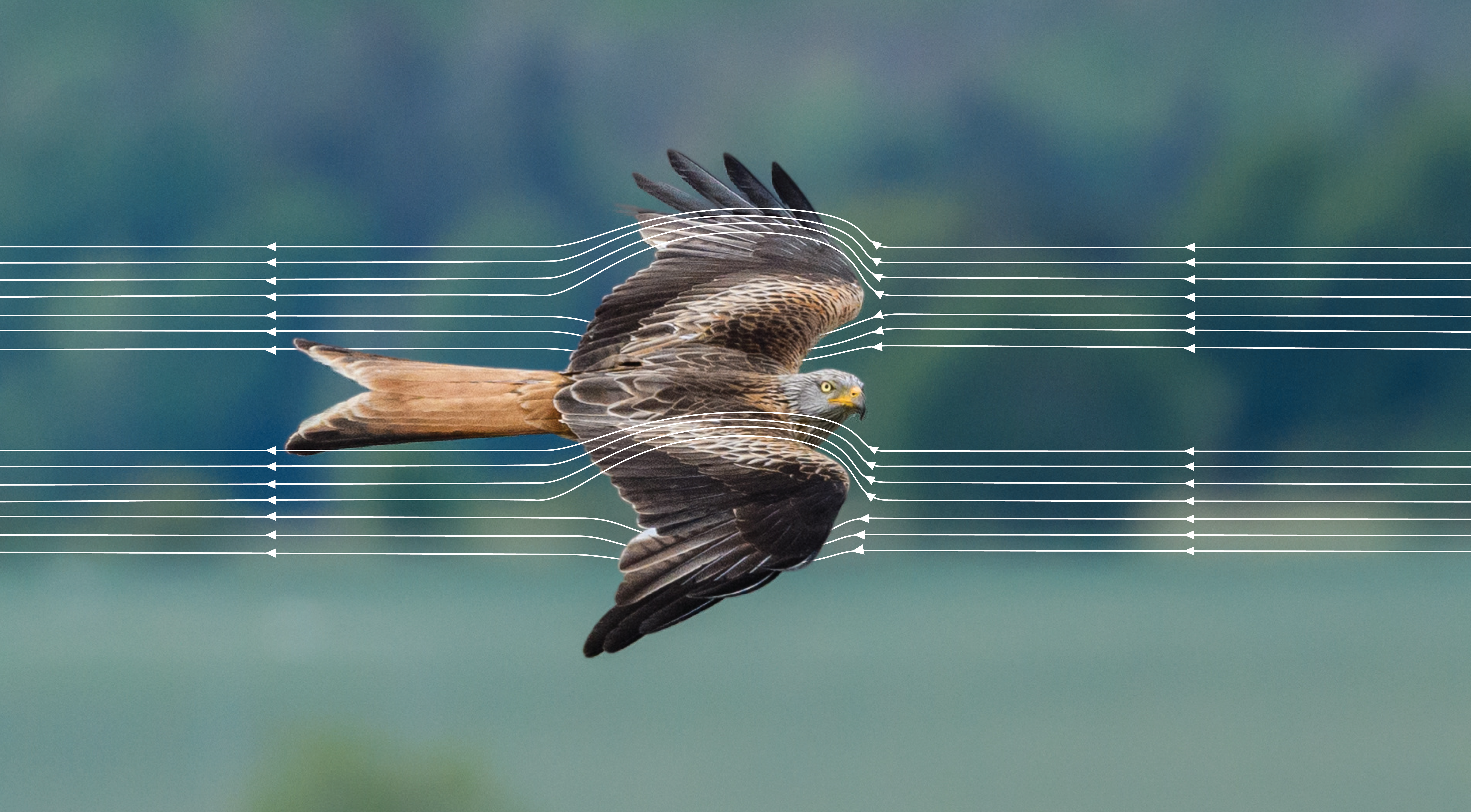Humble feathers called “coverts” could inspire new designs for aircraft wings.
By Jesse Kathan | August 8, 2022

Birds can dive, swerve, and perform complex aerial maneuvers unmatched by any aircraft. A new study suggests that subtle movements of specific feathers might be key to their agility.
In the study, published June 14 in Physical Review Fluids, researchers simulated the way air moves around a wing tilted sharply up, modeling a bird’s position during takeoff and landing.
When wings have a slight tilt, as most airplanes do, air glides smoothly over them. But at steep enough angles, eddies, or vortices, of air swirl off the front and back edges of the wing. These vortices alternately wax and wane in intensity in a process called vortex shedding.
The front vortex creates a zone of low pressure over the wing, lifting it up. But the rear vortex sends a stream of air in the wrong direction, back towards the front of the wing. This stream, called reverse flow, robs the wing of the lift needed to fly.
To address the reverse flow problem, the researchers looked to coverts, the outermost row of feathers on bird wings, which cover the bases of the long, finger-like flight feathers. During flight, covert feathers can slightly angle up from the wing’s surface. To model how coverts might affect flight, researchers attached a flap to the top of a simulated wing. When extended, the flap stopped reverse flow from interfering with the wing’s lift.

A lesser whistling duck preparing to land, with covert feathers visibly raised from the surface of its wings.
“The flap essentially acts as a dam,” said Nirmal Nair, an aerospace engineering graduate student at the University of Illinois–Urbana-Champaign and author of the paper. “It does not allow the pressure on the front and rear side of the flap to mix together, and that helps in maintaining that low pressure region in front of the flap.”
Previous studies have examined how these flaps can improve lift, but most have modeled the flap either as a rigidly attached bar or a freely moving hinge. Nair’s paper is one of the first to simulate the flap attached at various levels of stiffness.
In the simulation, the flap worked best at a middle level of stiffness. Too flexible, and the flap would raise more than necessary; too stiff, and it wouldn’t move at all. “There was a sweet spot in between,” said Nair.
At the sweet spot, the flap lies flat when the lift-boosting front eddy dominates, and raises when the lift-inhibiting back eddy is more powerful. “You get this kind of beautiful synchronization between the way that the flap starts moving and the way that vortex shedding is occurring,” said Andres Goza, an aerospace engineer at the University of Illinois–Urbana-Champaign who also authored the study. When the flap and the vortices are in sync, the wing reaps the full benefits of the front vortex while mitigating the burden of the rear vortex.
“I think this paper was really nice. It provided a nice simplified representation of the problem to really get at the fundamental mechanisms, so that we can understand what it is that these covert feathers are doing for these birds,” said Daniel Floryan, a mechanical engineer at the University of Houston who was not involved with the research. “By focusing on this simplified problem and trying to get at general mechanisms, it provides a great path forward to try to adopt these strategies that birds use in future man-made vehicles.”
Next, Nair and Goza aim to bring their simulation to life. To do that, they’re collaborating with Princeton engineer Aimy Wissa, whose lab uses inspiration from nature to create new kinds of robotic and aerospace vehicles. Wissa is using a wind tunnel to test physical models of wings with covert-inspired flaps.
“One thing that Amy and I are hoping is in the works is that we're going to be able to work with some zoologists to actually get some bird feathers and see what types of dynamics those can undergo,” Goza said.
By better understanding the flight dynamics of birds, the collaboration could be the first step toward creating drones or other aircraft that match their abilities.
Jesse Kathan is a science journalist based in Berkeley, California.
©1995 - 2024, AMERICAN PHYSICAL SOCIETY
APS encourages the redistribution of the materials included in this newspaper provided that attribution to the source is noted and the materials are not truncated or changed.
Editor: Taryn MacKinney
September 2022 (Volume 31, Number 8)
Articles in this Issue

